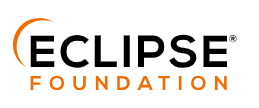The new product from POWDER combines software defined radios (SDRs) with an OpenAirInterface (OAI) 5G software stack implementation and a specially created radio frequency (RF) frontend.
At POWDER, the National Science Foundation (NSF) PAWR testbed in Salt Lake City, Utah, new 5G research capabilities have been unveiled, according to the Platforms for Advanced Wireless Research (PAWR) Project Office. Over its outdoor radio network, the POWDER platform has added open source 5G software. The deployment enables researchers of all stripes to test their theories on a functioning network and come up with new ideas that will help to realise the full potential of sophisticated 5G and future technologies.
There is a growing need for more open networks to enable quicker innovation and a more competitive market, whereas typical commercial networks use integrated, proprietary hardware and software. The scientific community will be essential to this evolution. Research platforms can give users access to previously inaccessible components of communications systems by making investments in the creation and deployment of open network designs. More people can work on enhancing network technologies because to this availability.
Although the RF frontend uses CBRS spectrum, it is built in a modular way that makes it simple to add support for more spectrum bands. The POWDER 5G capabilities include access to backhaul connectivity, a range of compute resources, and common off-the-shelf (COTS) 5G devices or user endpoints (UEs), some of which are installed on campus shuttles to enable mobility experiments. These capabilities are built on top of an advanced resource management platform.
Since its debut in 2019, the POWDER testbed has been entirely configurable. Since then, scientists have consistently added to a database of software profiles that support various network settings. The most challenging configuration to complete was building an open source mobile broadband network. Both continuous open source development efforts and the POWDER team’s creation of RF frontend features to improve signal performance in deployed SDRs have contributed to the project’s success.
The POWDER platform offers a click-to-install software profile for the OAI-based 5G network. It uses the CBRS frequency range and can be utilised to test out open radio access network (Open RAN) technologies and other advancements in virtualized networking that are powering next-generation wireless communications.
The National Science Foundation (NSF) and a group of top wireless associations and businesses jointly support the PAWR programme. It is run by the PAWR Project Office, which is jointly led by Northeastern University and nonprofit US Ignite. Platforms under the PAWR programme in addition to POWDER include COSMOS in New York City, AERPAW in the Research Triangle region of North Carolina, and ARA, a rural broadband testbed that is currently being built in Ames, Iowa. The largest radiofrequency emulator in the entire world, Colosseum, is one of the additional tools and facilities offered by the PAWR initiative.




